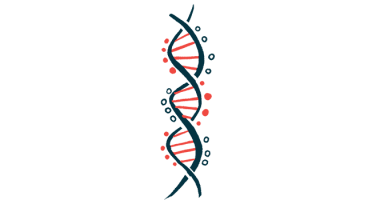Excessive Eating Affects Caregiver Burden in PWS

The excessive eating experienced by people with Prader-Willi syndrome (PWS) intimately affects the burden felt by their caregivers, according to a recent study.
While this comes as no surprise to caregivers, the finding provides some of the first direct evidence of this relationship, which can inform future studies.
The study, “Characteristics and relationship between hyperphagia, anxiety, behavioral challenges and caregiver burden in Prader-Willi syndrome,” was published in the journal PLOS One.
Excessive eating, or hyperphagia, is a hallmark of PWS. Along with behavioral symptoms and limited treatment options, it contributes to the challenges involved in caring for affected individuals.
Measuring hyperphagia has proven difficult. Weight gain sometimes is used as a proxy measurement, but does not work well with individuals on restricted diets. The hyperphagia questionnaire for use in clinical trials (HQ-CT) is a tool designed to more directly measure this symptom, but little is known regarding how HQ-CT scores vary with time and patient age, or how scores relate to caregiver burden.
A team of researchers from the Foundation for Prader-Willi Research, in Walnut, California, explored this by analyzing the relationship between HQ-CT and Zarit Burden Interview (ZBI) scores over a six-month period. ZBI assesses caregiver burden in health, psychological well-being, finances, social life, and relationship with the patient. The team also included body mass index (BMI) to examine relationships between hyperphagia and weight.
A total of 204 caregivers — all living in the U.S., each caring for one patient — completed an online survey, with 83 completing a second survey six months later.
The initial survey included 46 questions covering demographics, HQ-CT, ZBI, and questions related to the impact that PWS symptoms and care-related issues had on affected individuals and their caregivers.
The second survey repeated these questions, adding two more about significant life events and changes in health or behavior for the prior six months.
Age range of individuals with PWS in the study was distributed evenly from from infancy to early adulthood, with only four patients ages 31 or older.
Children ages 0 to 4 showed the smallest average degree of hyperphagia, with scores increasing by age and growing more variable in the oldest group.
Caregiver burden tended to rise with age, with the highest burden reported among caregivers of people in the 19- to 30-year range.
Overall, caregiver burden increased with HQ-CT scores, with the exception of scores from children ages 0–4. Those for individuals ages 31 and older moderately corresponded to caregiver burden, but did not reach statistical significance.
BMI did not appear to predict hyperphagia scores, although obese individuals scored higher than their normal-weight peers.
The symptoms with the greatest negative impact varied with age among both individuals with PWS and their caregivers.
Among those with PWS, low muscle tone, poor stamina, delayed cognitive development, and poor feeding most affected children ages 0 to 4. Anxiety, temper tantrums, and oppositional (defiant) behavior made the greatest impact among those ages 5 to 30.
Among caregivers, the time required for care, food preparation, and financial concerns most affected those caring for children ages 0–4. Anxiety, temper tantrums, and the time needed for care most concerned caregivers of individuals ages 5–11. As for caregivers of individuals ages 12 and older, anxiety, oppositional behavior, and temper tantrums had a significant impact, although food-seeking was the most relevant issue for those caring for adults ages 19 to 30.
At the follow-up survey, 77% of the 83 caregiver respondents reported no significant life events, while 45% of individuals with PWS did experience a significant life change. These included treatment for mood or behavior (26%), changes in living situation (8%), health-related changes (5%), and treatment for hunger (4%).
Overall, neither hyperphagia nor caregiver burden scores changed significantly over the study period, regardless of significant life events.
Although the investigators mentioned that the tight relationship between measures of hyperphagia and caregiver burden is not surprising, given the life-threatening nature of that aspect of PWS and the constant care needed to manage it, this study is, to their knowledge, “the first study to provide direct evidence of a relationship between caregiver burden and hyperphagia in PWS.”
The study “demonstrates a relationship between hyperphagia and caregiver burden,” the researchers concluded, “and sheds light on predominant symptoms in children and adolescents that likely underly PWS caregiver burden.”






